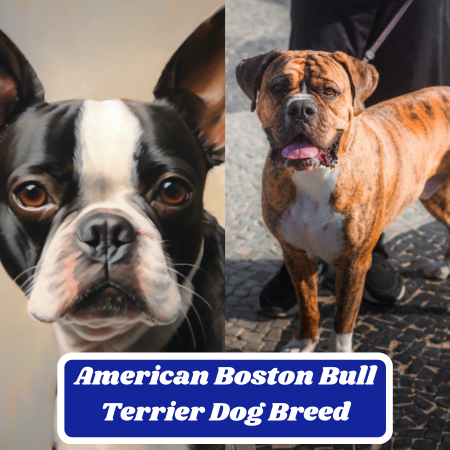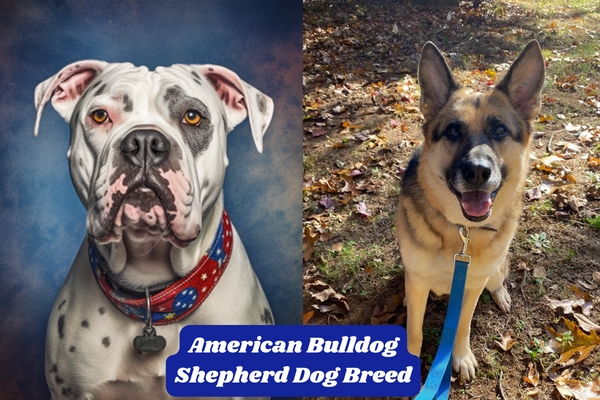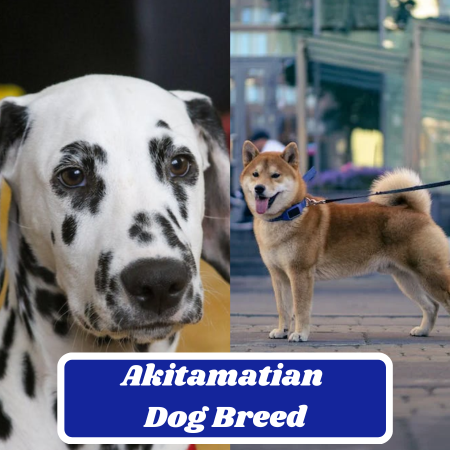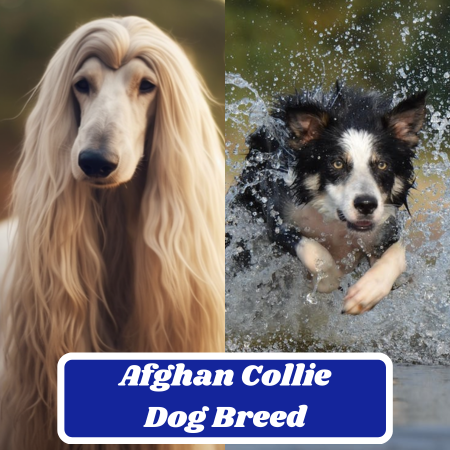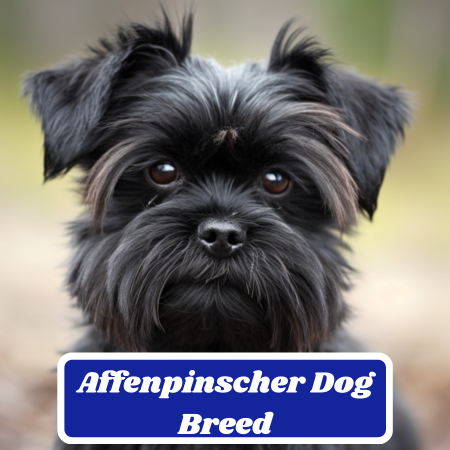Akbash Dog Breed Characteristics, Information & Facts
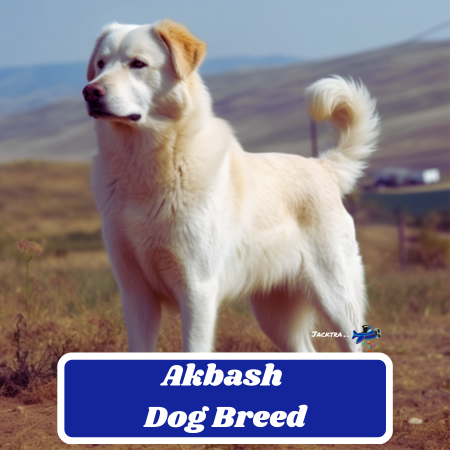
| Height | Weight | Lifespan | Colors | Suitable for | Temperament |
|---|---|---|---|---|---|
| 27-34 inches | 75 – 140 pounds (Male/Female Factor) | 10 – 12 years | white or cream in color. Some dogs may have black or gray markings on their coat | Families, playing, active, protection | Funny, active, loving |
Introduction
The Origin of Akbash Dogs
Akbash dogs are a breed of livestock guardian dogs that originated in Turkey. These large, white dogs were used to protect flocks of sheep from predators, such as wolves and bears.
The name “Akbash” comes from the Turkish word “akbas,” which means “white head.” The breed is believed to have been around for several centuries and was developed through selective breeding to create a dog that could withstand the harsh climate and terrain of central Turkey.
During the 1970s, American researchers Judith and David Nelson delved into the origins of the Akbash breed in Western Turkey. Fascinated by their findings, they introduced the breed to North America at around the same time.
The United States Department of Agriculture has since employed these remarkable dogs in its predator control program. In 1998, the Akbash gained recognition under the guardian breeds by the United Kennel Club (AKC).
Despite its rarity, the Akbash can still be found in local shelters or breed-specific rescues. Consider adopting an Akbash if you and your family have taken a liking to this breed.
Physical Appearance
Akbash dogs are large, muscular dogs that can weigh up to 140 pounds and stand over two feet tall at the shoulder. They have a distinctive all-white coat that is thick and dense, protecting from both cold weather and predator attacks.
Their almond-shaped eyes are usually brown or amber in color, and their nose is black.
Temperament
Despite their intimidating size, Akbash dogs are known for being gentle giants. They are loyal and devoted to their families but can be wary of strangers if not properly socialized.
As livestock guardians, they have a strong instinct to protect their flock or family members against any perceived threat.
Therefore training is important; otherwise, they may become overprotective and aggressive toward other animals or people.
Akbash dogs have an interesting history as working dogs in Turkey, where they were bred for centuries as livestock guardians against predators like wolves or bears.
Their physical appearance with a distinct all-white coat and their gentle yet protective nature makes them an attractive choice for many dog owners today who seek a loyal furry companion with guarding abilities.
Physical Characteristics
Size, weight, and height ranges
The Akbash is a large breed of dog. Males typically weigh between 90-130 lbs and stand 28-34 inches tall at the shoulder. Females are slightly smaller, weighing 75-105 lbs and standing 27-32 inches tall.
These dogs have a powerful build with muscular legs and broad chests. They are known for their agility and speed.
Appearance and Characteristics
| Breed Characteristics | |
|---|---|
| Temperament | |
| Affectionate with Family | ⭐️⭐️⭐️⭐️⭐️ |
| Good with Children | ⭐️⭐️⭐️⭐️☆ |
| Sociability with Dogs | ⭐️⭐️⭐️⭐️☆ |
| Friendliness towards Strangers | ⭐️⭐️⭐️☆☆ |
Coat color and texture variations

The Akbash has a thick, double-layered coat that is usually white or cream in color. Some dogs may have black or gray markings on their coats, but it’s uncommon. The texture of the coat varies from dog to dog, but it’s typically soft to the touch with longer hair around the neck area.
Unique physical features (e.g. almond-shaped eyes, black nose)
One unique feature of the Akbash is their almond-shaped eyes ranging from brown to amber. Their ears are medium-sized and may be floppy or erect, depending on how they’re bred.
These dogs also have a black nose that stands out against their white fur coat which gives them an attractive appearance compared to other breeds of dogs. Overall, the physical characteristics of an Akbash make them stand out from other breeds of dogs due to their size, agility, strength and unique physical features such as almond-shaped eyes and black noses against a white or cream-colored fur coat.
Children And Other Pets
In terms of interacting with children, the Akbash is a large dog that can handle their enthusiastic play.
However, due to their low energy levels, they may prefer being around adults or older children who play gently.
Nevertheless, with appropriate guidance on proper approach and play, Akbash dogs can make great active companions for children.
Regarding other pets, the Akbash can coexist peacefully if introduced slowly and calmly, with early socialization being a crucial factor.
Although Akbashes are not inherently fond of other animals, they can adapt to living with them if they get accustomed to them early on.
However, some Akbashes may prefer being the only pet in the household. Ultimately, it depends on the training, socialization, and chance. Many Akbashes can get along well with other cats and dogs.
Temperament and Personality Traits
| Breed Characteristics (Higher = More Suited) | |
|---|---|
| Flexibility | |
| Apartment Living | ⭐️⭐️☆☆☆ |
| Good For New Owners | ⭐️⭐️⭐️☆☆ |
| Are They Sensitivite? | ⭐️⭐️⭐️☆☆ |
| Good With Being Alone | ⭐️☆☆☆☆ |
| Prefers Cold / Winter Dog | ⭐️⭐️⭐️⭐️☆ |
| Prefers Warm / Summer Dog | ⭐️⭐️☆☆☆ |
Loyalty and protectiveness towards their owners/families
Akbash dogs have an innate instinct to protect their owners and families. They are fiercely loyal and will do anything to keep their loved ones safe.
This is why they make great watchdogs and guardians, especially for livestock. In fact, Akbash dogs were originally bred in Turkey as sheep guardians to ward off predators like wolves, bears, and coyotes.
Their loyalty to their flock was so strong that they risked their lives to protect them. So if you’re looking for a dog that will be by your side no matter what, an Akbash may be the perfect choice for you.
On the flip side of their loyalty is that Akbash dogs can sometimes be quite independent and stubborn. This means that they may not always listen to commands or follow rules unless properly trained. Another potential issue with this breed is their tendency to roam.
Because they were bred as livestock guardians, Akbash dogs have a strong instinct to patrol large areas of land. If left unsupervised or not properly trained, they may wander off in search of something interesting or exciting.
However, with proper training and socialization from a young age, these tendencies can be managed effectively. It’s important for owners of Akbash dogs to establish themselves as the alpha early on through consistent training methods.
Adaptability to different living environments (e.g., rural vs urban)
Despite being bred for rural environments initially, Akbash dogs are surprisingly adaptable when it comes to living in different environments – whether it’s a farm or an apartment in the city.
That being said, it’s important for owners of this breed to provide ample space for exercise and playtime, regardless of where they live.
This is especially important for their mental and emotional well-being. Overall, Akbash dogs can make incredible companions for the right owner.
Their loyalty and protective nature are unmatched, but potential owners should be aware of their independent streak and need for proper training and socialization. If you’re up to the challenge, an Akbash may be the perfect addition to your family.
Feeding
To maintain an ideal diet for Akbash, it’s crucial to consider their low energy levels as they are prone to weight gain if overfed. Establishing a regular feeding schedule and avoiding leaving food out during the day is recommended while limiting the number of treats given.
The dietary needs of Akbash dogs evolve from puppyhood to adulthood and later into their senior years, and consulting with a veterinarian is essential for personalized diet recommendations.
Since various factors, such as weight, energy, and health, vary among individual dogs, providing specific feeding instructions is challenging.
Health and Care
| Health and Grooming Needs (Lower The Starts = The Less) | Rating |
|---|---|
| Shedding | ⭐️⭐️⭐️⭐️☆ |
| Drooling | ⭐️⭐️⭐️☆☆ |
| Grooming Difficulty | ⭐️⭐️⭐️☆☆ |
| General Health (higher = better) | ⭐️⭐️⭐️⭐️☆ |
| Weight Management (Potential for weight gain) | ⭐️⭐️⭐️☆☆ |
| Size | ⭐️⭐️⭐️⭐️☆ |
Common health problems that affect Akbash dogs (e.g. hip dysplasia, bloat)
Like all dog breeds, Akbash dogs are prone to certain health problems. One of the most common issues is hip dysplasia, a genetic condition affecting the joint connecting the thigh bone to the pelvis.
This can cause discomfort and pain, and in severe cases, can lead to arthritis. To prevent this issue from developing or worsening over time, it’s crucial to keep an eye on your Akbash dog’s weight and avoid any excessive activity or jumping during puppyhood.
Another issue that can affect Akbash dogs is bloat, also known as gastric torsion or twisted stomach. This occurs when an abnormal accumulation of gas and fluid in the stomach causes it to twist on itself.
The symptoms of bloat include abdominal distention or swelling, restlessness or pacing, and dry heaving or vomiting without producing anything. If you suspect your Akbash dog may be suffering from bloat, seek veterinary care immediately.
Tips for maintaining their overall health (e.g. regular exercise, proper nutrition)
To maintain your Akbash dog’s overall health and well-being throughout their life span, you should follow a few key tips: Firstly, ensure they are getting enough exercise! Like most working breeds of dogs with high energy levels and strength levels like the Akbash breed does , they require daily activity to keep them physically healthy as well as mentally stimulated – ideally 60-90 minutes per day depending on their age.
Secondly, proper nutrition is essential for preventing various health issues over time . Your veterinarian can help guide you on appropriate portion sizes for your specific dog based on factors like age , weight , energy level etc .
Ensure you stay up-to-date with regular veterinary checkups to maintain your dog’s overall health. This allows the vet to check for any underlying health issues and address them promptly and properly.
Training and Exercise Needs
| Trainability | Rating |
|---|---|
| Ease To Train | ⭐️⭐️⭐️⭐️⭐️ |
| Smart | ⭐️⭐️⭐️⭐️⭐️ |
| Potential For Mouthiness | ⭐️⭐️⭐️☆☆ |
| Prey Motivation & Frequency | ⭐️⭐️☆☆☆ |
| Loudness – Barking / Howling (higher = louder) | ⭐️⭐️⭐️☆☆ |
| Physical Needs | Energy Level | Intensity | Exercise Needs | Potential for Playfulness |
|---|---|---|---|---|
| ⭐️⭐️⭐️⭐️⭐️ | ⭐️⭐️⭐️⭐️⭐️ | High | At Least 1 Hour / Day | Very High |
Importance of Early Socialization to Prevent Aggression towards Strangers/Other Animals
Early socialization is crucial for Akbash puppies to prevent aggression toward strangers and other animals. Because they were bred as livestock guardians, Akbash dogs may instinctually see unfamiliar people or animals as threatening their flock.
Therefore, exposing them to different environments, people, and other animals from a young age is important so they can learn how to behave appropriately. Socialization should start as early as 8 weeks old when the puppy’s immune system is strong enough for them to venture outside their home.
It should involve supervised interactions with different people, including children and those with disabilities, and exposure to various types of animals. Positive reinforcement techniques should be used during these interactions so that the puppy associates them with positive experiences.
Recommended Training Techniques for Obedience and Behavior Modification
Akbash dogs are independent thinkers who may not always obey commands readily.
Therefore, training techniques that focus on positive reinforcement and consistency are recommended for obedience training.
These include using treats or toys as rewards when the dog successfully follows commands such as “sit,” “stay,” or “come.”
Using firm but gentle handling when training an Akbash dog is also important. If an Akbash dog develops negative behaviors such as aggression towards strangers or destructive tendencies, behavior modification may be necessary.
This involves identifying the root cause of the behavior, which could range from fear or anxiety to territorial instincts. It is essential to seek help from professional trainers experienced in dealing with large breeds like Akbash dogs.
Early socialization and consistent positive reinforcement training techniques are critical to raising a well-behaved Akbash dog.
With proper training and socialization practices in place, your furry friend can develop into a loyal and obedient companion who is comfortable in a variety of social situations.
Akbash Dogs as Working Dogs
History of their use as livestock guardians in Turkey
For centuries, the Akbash breed has been used in Turkey to protect livestock from predators such as wolves and coyotes.
These dogs were bred to be fearless and independent, making them the perfect guardians for flocks of sheep or goats. They have a natural instinct to protect their charges, even in the face of danger.
This instinct has been passed down through generations of Akbash dogs and is still evident today. The name “Akbash” actually means “white head” in Turkish, which refers to the breed’s distinct white coat that helps them blend in with their flock.
Their size and strength also make them an effective deterrent against potential predators.
Despite being known for their tough exterior, Akbash dogs are gentle with the animals they protect and are not aggressive towards them.
Modern-day applications as service or therapy dogs
In addition to their traditional role as livestock guardians, Akbash dogs have also shown potential as service or therapy animals. Due to their calm demeanor and loyalty towards their owners, they can make great companions for individuals with disabilities or mental health conditions.
Their intelligence and quick learning ability make them ideal candidates for tasks such as guiding blind individuals or alerting someone with hearing impairments to sounds around them.
They can also be trained for search-and-rescue operations due to their strong sense of smell.
Akbash dogs have a unique combination of physical traits and behavioral characteristics that make them well-suited for a variety of roles beyond just guarding livestock.
With proper training and socialization, they can adapt well to different environments and become valuable members of any team.
Fun Facts about Akbash Dogs
Unique traits that set Akbash dogs apart
Several unique features make Akbash dogs stand out from other breeds.
One such feature is their white coat, which helps them blend in with sheep and other livestock while guarding them from predators.
Additionally, they have a regal appearance, with long legs and an elegant gait.
Perhaps most interestingly, Akbash dogs possess a unique ability to think independently while still remaining loyal to their owners.
This makes them excellent working dogs in situations where they need to make decisions on their own.
FAQ For The Akbash Dog
Is Akbash aggressive?
Akbash dogs are known for their calm and gentle temperament and are not generally aggressive. However, individual personalities may vary, and proper socialization and training are important for a well-behaved pet.
Are Akbash dogs good pets?
Akbash dogs can make good pets for the right owners. They are loyal, protective, and affectionate towards their families. However, they are large and independent dogs that require experienced handling and proper training. Their natural guardian instincts may require extra attention and socialization.
What breeds make an Akbash Dog?
The Akbash Dog is primarily a breed of its own, originating from Turkey. While it is a distinct breed, it is believed to have some ancestral ties to other livestock guardian breeds, such as the Mastiff and the Kangal Dog.
Is Akbash a rare breed?
Yes, the Akbash Dog is considered a rare breed. They are not as commonly seen as some other dog breeds, especially outside of their native region. However, dedicated breeders and enthusiasts continue to work towards preserving and promoting this unique breed.
What are the cons of Akbash?
While Akbash dogs have many positive traits, there are a few cons to consider. Firstly, they are large and powerful dogs that require ample space and regular exercise. They have a strong protective instinct, which can sometimes lead to over-protectiveness or aggression if not properly managed. Additionally, their independent nature can make training more challenging compared to some other breeds. Responsible ownership and adequate training are crucial for a harmonious relationship with an Akbash dog.
Conclusion
We’ve explored some of the key characteristics and fun facts surrounding Akbash dogs.
Whether you’re considering adopting one as a pet or simply curious about this fascinating breed, there’s no denying that they have a lot to offer.
From their striking appearance to their loyalty and protectiveness towards their families, it’s clear why so many people love these incredible animals.
So whether you’re looking for a livestock guardian or simply a loving companion animal, keep the fascinating world of Akbash dogs in mind!

